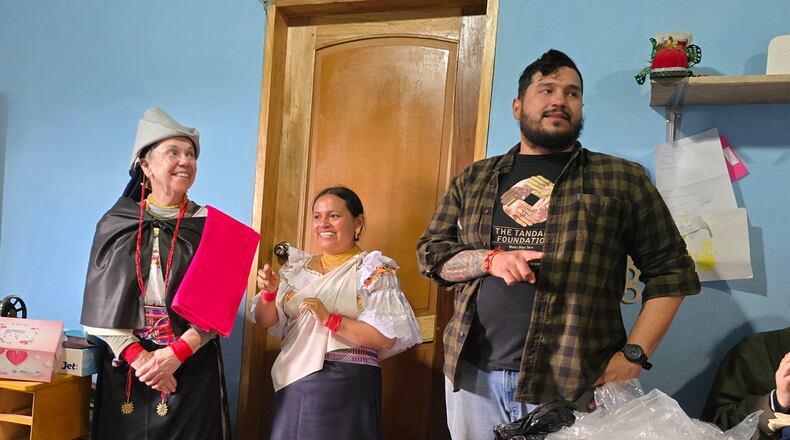We are finishing up the project that the first group started last week. We have been removing grass and weeds and preparing the soil for planting vegetables and lemon trees.
This is the hard part. Don’t get me wrong, the soil is fantastic in this area. However, the grass we remove (I have yet to identify it) is like johnsongrass on steroids. If you have ever dealt with this grass in your garden, you know what I mean.
This grass grows and spreads by rhizomes or underground stems. Wherever the nodes (the area where the leaves are attached) touch the soil, they root, send up shoots, and grow more.
It is a very good grass to grow in the Andean mountains. It does a great job of holding the soil in place. However, it’s hard to remove and to get all the rhizomes.
First, the soil in this area is incredible. Those of us in the Miami Valley who deal with heavy, compacted clay soil drool with envy when we see the Andea highland soils. It’s primarily volcanic soils which are quite sandy, loose, and well-drained.
Plants grow quite well in this area. The primary crops are corn, beans, and squash like the three sister’s garden. Three corn seeds, a couple of fava beans, and a couple of squash seeds are all planted in the same hole.
The soil is easy to dig but because of the rhizomatous grass, it takes several times to go over a bed. The only tool that is used by the indigenous people is the hoe. It’s not like our lightweight hoes, it’s quite heavy.
The hoe is used to prepare the soil, dig the rows, dig a hole to plant a lemon tree and weed the garden. That’s it. We brought the foundation soil knives many years ago, thinking that the Indigenous people would like to use them, but they are happy with their hoe.
The parents at the school are required to help with these projects. The project these past two weeks was to plant vegetables and fruits. Not only will these feed the children (K-eighth grade) but will also be used for science, reading, math, and other school projects.
At the end of each week, we had a pambamesa in which all community members brought a dish such as potatoes, fava beans, rice, tostadas (roasted corn, like Corn Nuts), and more. The food is spread on a large table, and we all partake together.
Once again, the OSUE MGVS had another successful two weeks in Ecuador. If you are interested in learning more about volunteer opportunities or donating to this worthwhile effort, go to tandanafoundation.org.
Pamela Corle-Bennett is the state master gardener volunteer coordinator and horticulture educator for Ohio State University Extension. Contact her by email at bennett.27@osu.edu.
About the Author


